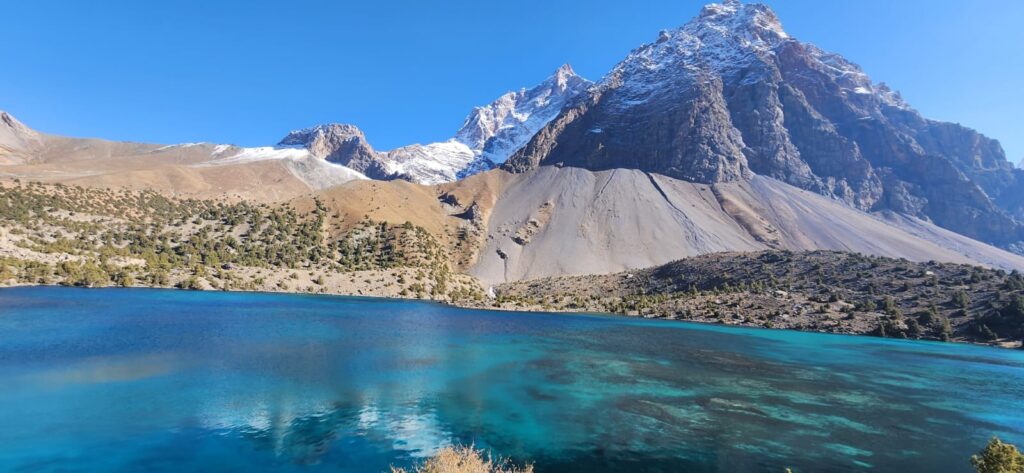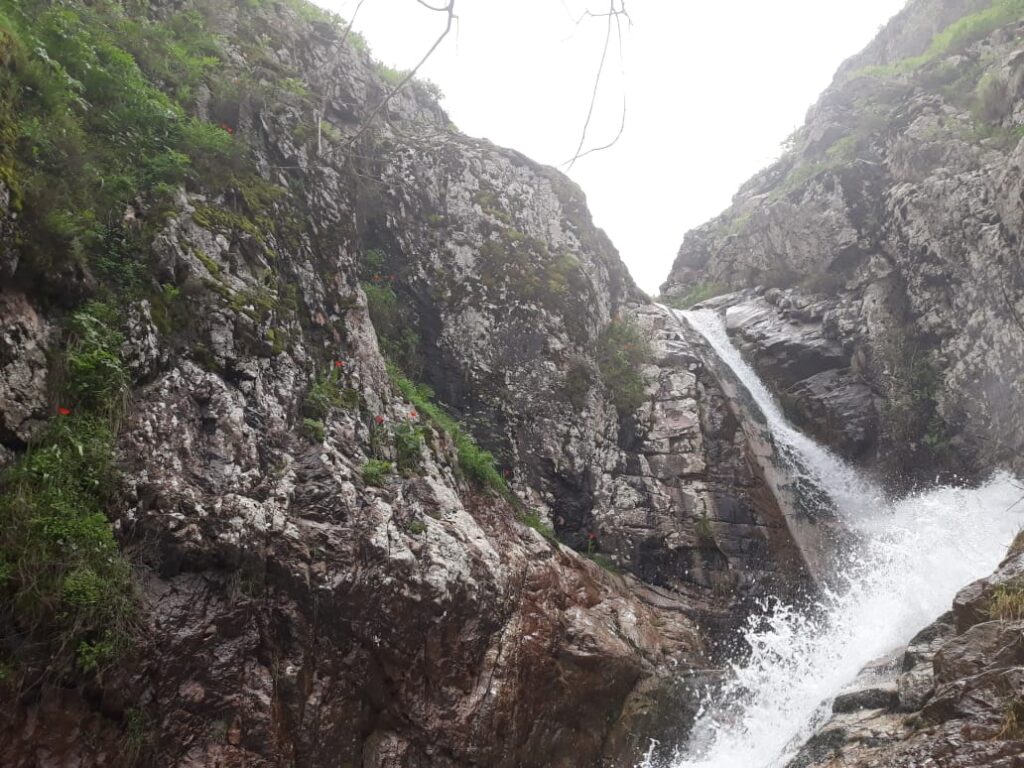In the irrigated valleys of southern Tajikistan, late summer means the cotton fields turn white. Bolls crack open in the heat, revealing the soft fiber that once earned this region the name “white gold.” The crop’s geometry is clear from above: rectangular plots, evenly furrowed, stretching toward the horizon. Alongside them, though, another geometry is quietly expanding. Wheat fields, sown in autumn, now claim more of the landscape each year. The shift is subtle but steady, and it hints at a deeper geographic balancing act between export ambition and subsistence security.
Cotton has shaped Tajikistan’s lowlands for nearly a century. During the Soviet period, central planners remade the floodplains of the Vakhsh and Khatlon regions into a network of irrigated monocultures, channeling water from rivers through canals and pumping stations to support intensive cotton production (Spoor, 1993). This “white gold” was destined for textile mills elsewhere in the USSR, while wheat and other foodstuffs were imported. The landscape that remains: long straight canals, grid-like fields and cotton gins at the edges of towns- they still reflect upon this legacy. But in the decades since independence, the balance has shifted as the republic has had to feed itself more directly.
The geography of this transition is visible in cropping maps from the mid-2010s. In Khatlon, wheat acreage has expanded significantly since the early 2000s (Lerman & Sedik, 2009). Many farmers, once bound by state cotton quotas, now cultivate wheat to ensure household food security or to meet local market demand. Yet cotton still occupies some of the most fertile lands, tied to established irrigation infrastructure and export networks. The contrast is stark during harvest: men and women hand-pick cotton under the hot sun in September, while wheat fields lie bare, their grain already threshed and stored by midsummer.
“Cotton brings cash, wheat brings bread,” one farmer in Bokhtar explained. His family divides their land accordingly—two hectares of cotton for sales, one hectare of wheat for flour. Such calculations reflect both ecological constraints and economic strategies. Wheat needs reliable irrigation early in the season, while cotton demands steady water through the heat of summer. In years of drought, the two compete for limited canal flow. In wet years, cotton often wins because of its higher market value, though wheat ensures resilience if food imports falter.
Balancing cotton and wheat is not simply an economic choice; it is a geographic negotiation played out in soil, water, and time. Fields cannot be both simultaneously. Irrigation canals cannot deliver peak flows to every crop. And farmers, navigating quotas, markets, and subsistence needs, decide each season where to tilt the balance.
Today this balance is under a quiet strain. Cotton prices on global markets remain volatile, affected by production trends in larger exporters like Uzbekistan, the United States, and China (FAO, 2016). Meanwhile, Tajikistan’s growing population puts pressure on domestic wheat supply. According to national statistics, the country produces only around 30–40% of its wheat consumption, importing the rest mostly from Kazakhstan (ADB, 2015). Expanding wheat acreage offers one path toward greater food self-sufficiency, but it requires diverting land and water from cotton, potentially reducing export revenues. Policymakers face a classic development dilemma, but on the ground, it unfolds through furrow lines and irrigation gates.
Soils play a quiet role in this story. Cotton thrives on well-drained alluvial soils with good salinity control, while wheat tolerates moderately heavier soils but depends on early-season moisture. In parts of Khatlon, decades of cotton cultivation have led to salinization, particularly where drainage infrastructure has degraded (Christmann et al., 2009). These areas are often converted to wheat, which can manage better with winter moisture and lower salt levels. Conversely, better-drained plots with proximity to pumping stations remain cotton strongholds. In this way, past irrigation engineering continues to shape present cropping patterns.
Farmers’ experiences reflect this subtle geography. In one village near Qurghonteppa, older men remember when cotton quotas were mandatory and strict. “We grew cotton because we had to,” one said, sitting by the canal. “Now we grow some wheat for our families. But cotton still pays the bills.” Younger farmers, inheriting fragmented plots through family divisions, often focus more on wheat because it requires less seasonal labor and offers more immediate household benefit. Labor migration also affects this calculus. Many working-age men leave for Russia seasonally, leaving women and elders to manage fields. Wheat fits more easily into this labor pattern than cotton, which is labor-intensive during harvest.
The irrigation networks themselves are part of the geographic equation. Built primarily to serve cotton during the Soviet period, they favor summer water delivery and extensive canal reach. Wheat irrigation, concentrated in early spring, often relies on smaller lateral channels or winter precipitation stored in soil profiles. In some districts, farmers have begun informal scheduling agreements to share water between crops, but conflicts arise during dry years when canals run low. Geographic positioning matters: farms at canal headworks receive more reliable flow, while those downstream face shortages.
By mid-2010s, international donors had begun encouraging wheat expansion as part of food security strategies, but cotton remained enmeshed in export commitments and local patronage networks. According to the Asian Development Bank (2015), Tajikistan devoted roughly 45% of its irrigated cropland to cotton and 30% to wheat by 2015. These proportions vary regionally but reflect a structural duality: one crop for market, the other for sustenance. Climatic variability intensifies this tension. A series of dry springs in the early 2010s tested canal capacities and farmers’ adaptive strategies.
Geographically, cotton and wheat define contrasting temporal landscapes. Cotton fields are alive through summer, their furrows damp, their plants tall. Wheat fields belong to cooler months, greening in late winter and ripening by May or June. In aerial images, these rhythms appear like alternating panels in a quilt. Yet beneath these patterns lie shared aquifers and canals. Over-extraction for cotton can lower groundwater tables, affecting wheat emergence in the following season. Farmers who rely on shallow wells notice these fluctuations first.
Voices from the fields capture this balancing act vividly. A woman managing her family plot near Vakhsh said, “We plant wheat so we do not buy flour. Cotton gives us cash, but wheat feeds us.” Another farmer added, “If the canal dries, cotton suffers first. Wheat can use the rain.” Their pragmatism reflects a deep geographical awareness shaped by generations of irrigation farming.
In some areas, local experimentation is quietly underway. Intercropping wheat and cotton sequentially by wheat harvesting early, cotton planting after offers one solution, though it depends on careful water management and timely sowing. This “double cropping” has precedent in Central Asia but remains limited by labor and irrigation constraints (Trevisani, 2010). Where tried, it blurs the neat boundaries between the two cropping systems, but only in places with early wheat-maturing varieties and sufficient canal control.
The year 2016 does not bring a definitive resolution to this balancing act. Cotton remains Tajikistan’s key cash crop, anchoring its agricultural exports. Wheat remains central to its food security. The two crops continue to share the same valleys, drawing on the same rivers, mediated by the same canals. Their interaction reflects not just economic priorities but the geographic legacy of irrigation landscapes and the ecological limits of arid valleys.
At sunset during cotton harvest, fields glow with the pale white of open bolls. Nearby, in storage sheds, wheat sacks stand stacked, waiting for winter baking. The two crops embody different temporalities and geographies: one outward-facing toward global markets and the other inward-facing toward household survival. To walk the furrows between them is to trace the delicate balancing act that shapes Tajikistan’s irrigated plains of today.
References
- Asian Development Bank (ADB). (2015). Tajikistan: Agriculture Sector Assessment, Strategy, and Road Map. Manila.
- Christmann, S., Quasem, A., & Rajabov, T. (2009). Salinity management in Central Asian irrigated agriculture. Irrigation and Drainage, 58(1), 75–87.
- FAO. (2016). FAOSTAT Database. Rome: Food and Agriculture Organization.
- Lerman, Z., & Sedik, D. (2009). Agrarian reform in Tajikistan: achievements and challenges. FAO Regional Office for Europe and Central Asia.
- Spoor, M. (1993). Transition to market economies in former Soviet Central Asia: Cotton, water and restructuring. Europe-Asia Studies, 45(1), 47–68.
- Trevisani, T. (2010). Land and power in Khorezm: Farmers, communities and the state in Uzbekistan’s decollectivization. ZEF Development Studies, 66.








